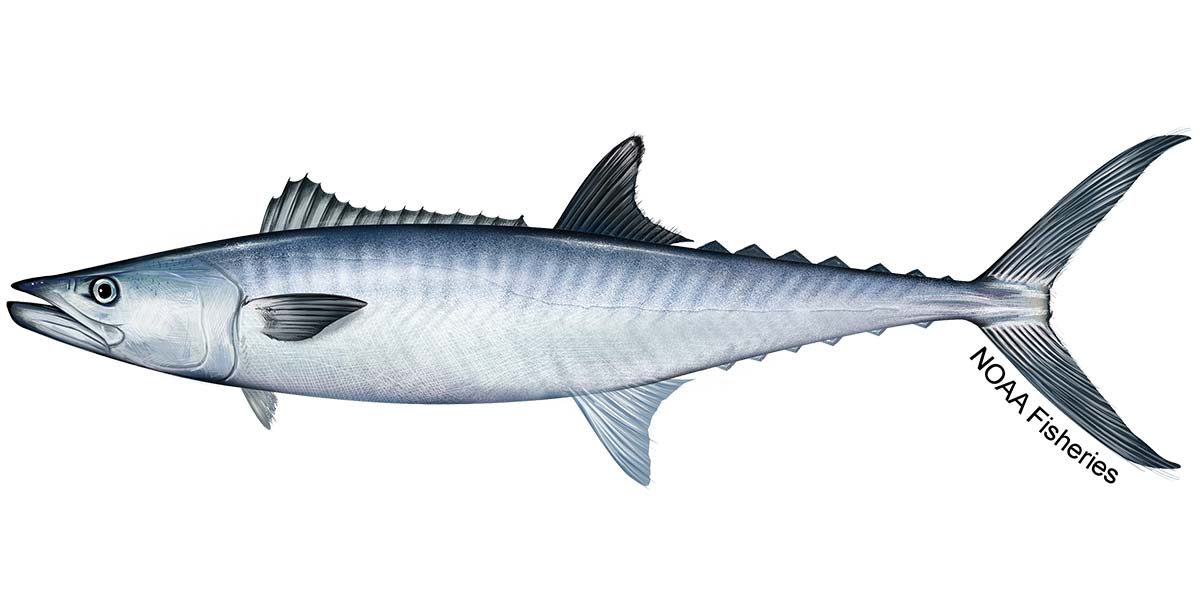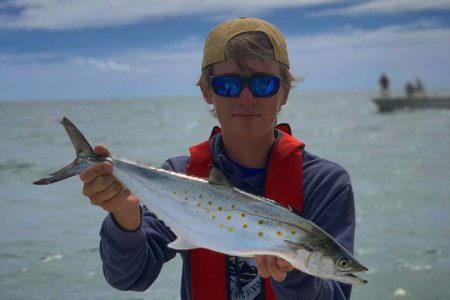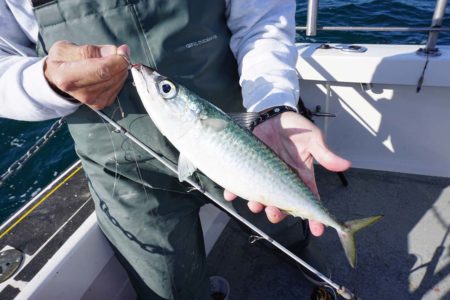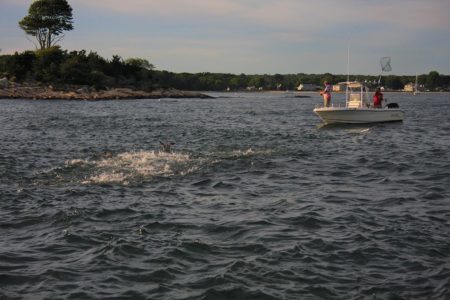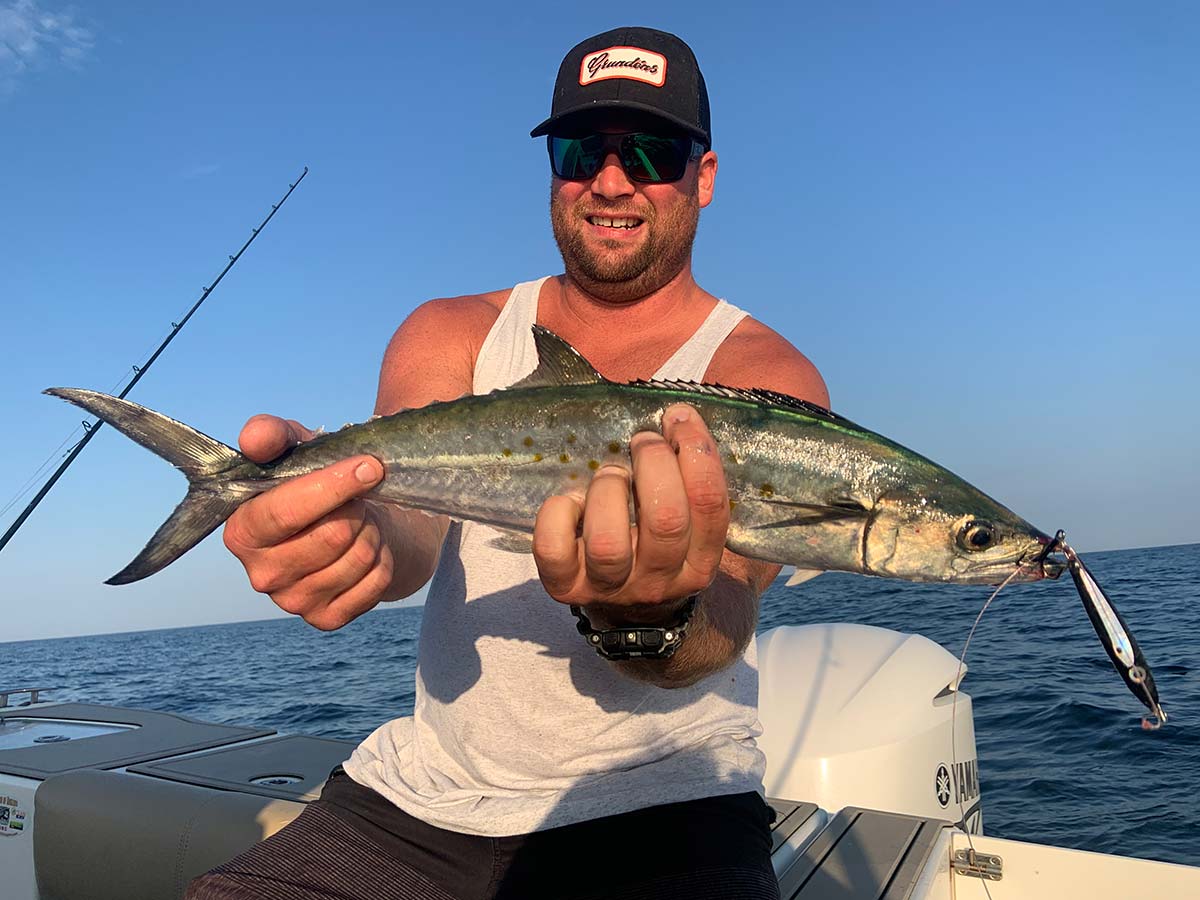
Our summer variety just keeps getting better and better each year.
It’s a mackerel’s life for me!
Searing summers in recent years have ushered in a bunch of “exotics” to the Jersey Shore area, two of which were historically found in sprinklings, but now have become quite targetable – Spanish mackerel and king mackerel. The twosome of true speedsters zip drags like none other and both make delectable table fare.
Both species tend to show up in New Jersey, Delaware waters starting in July and will hang in the area until early September so long as water temperatures are running between 70 and 80 degrees, which makes them the perfect summer targets.
Get your gear, here’s how to find and catch kings and Spanish.
Spanish Visitors
The easier species to find is no doubt the Spanish mack. Found from the surfline out to the midshore grounds, Spanish amass in sizable schools, speeding around to harass rainbait schools wherever they may roam. Spanish can usually be seen vaulting out of the water as they chase bait schools around. The baitfish they predate upon determines the types of lures to toss; long, thin metal lures like Deadly Dicks, Ava 007s, and Williamson Gomoku jigs are cast out and reeled back at neckbreaking speed as fast as you can crank the handle as the speeding jig attracts any Spanish in the area to beeline right to the lure and hit with a power punch. That tactic works for both boat fishing and surf fishing.
While using metal leader is unnecessary, just be sure to up your fluorocarbon leader to 25 or 30 pounds to prevent any bite offs. Spanish will also congregate around debris and floating structures such as logs, seaweed patties and hi-flier pot flags. If trolling, send out Clark spoons, small feathers and jets to troll around looping the pots or debris to pull Spanish off for a strike. If you find a school of fish, either by hooking up or visually seeing them jumping out of the water, send out small soft baits such as RonZ or Hogy baits and jig them back to the boat.
As a side note, one surfcasting session in Lavallette while hooking Spanish macks, I encountered a true monster that dumped my spool three times before I had it beside me waist deep on the sandbar. Its wide mouth flaring, by quick careful measurement from my fishing rod, it taped out at 38 inches, which would’ve put this fish at world record caliber, however, the fish made a quick thrashing exhale and dislodged the lure from its mouth and sped away.
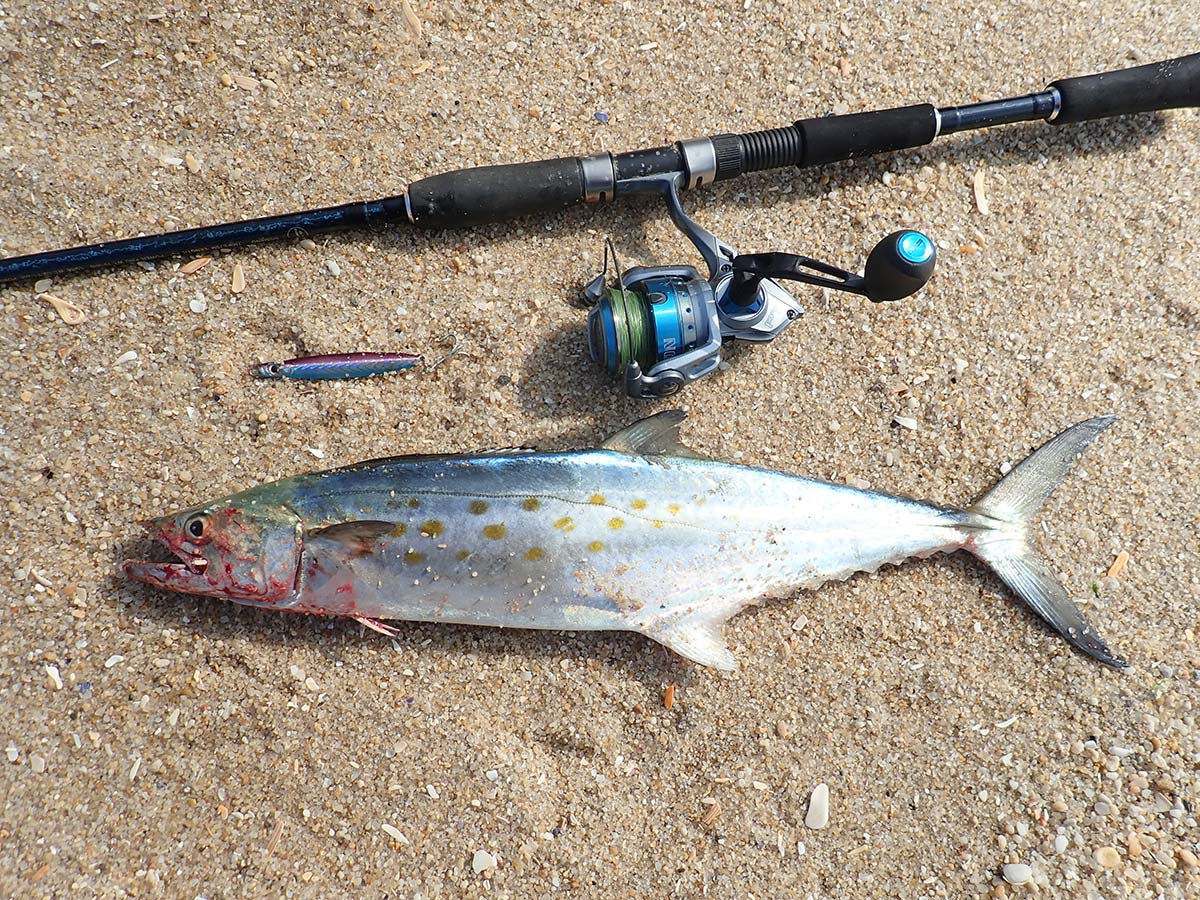
Kings Rule
King mackerel were predominantly a far southern New Jersey species, with always a few being caught at the Deepwater Reef, Old Grounds and Cape May Reef sites, but their presence has decidedly begun to move northward as they can now be found as far up as Shark River area and in the midshore and offshore canyon grounds.
Kings grow larger than their Spanish counterparts and though they can reach up to smoker size down south in Florida to 40 pounds and greater, the usual class fare is in the 5- to 15-pound range in our local waters waters. Kings are also incredibly fast both in their approach to feeding and in their battles as a tight drag will invariably result in a broken line. Their dentition is also no joke as the teeth are large and fit perfectly like a tongue and groove buzzsaw so targeting kings means to utilize a thin small shot of wire leader to any lure or trolled offering.
The kings I have hooked came while jigging tuna with slim butterfly jigs, but I’ve also had kings follow large swimming plugs right to the boat that are retrieved with a super quick wobble. Trollers targeting king macks will send out through wired ballyhoo baits with a wired stinger hook to ensure the teeth do not cut the bait in half nor sever the line. Trolling is fast at a 7- to 9-knot pace.
Tell The Difference
| NJ/DE REGULATIONS |
In both New Jersey and Delaware, the minimum size limit for a Spanish mackerel is 14 inches with a bag limit of 10 fish; with king mackerel the minimum size is 23 inches with a three fish bag. King mackerel (often referred to as kingfish in the Southeast) get significantly larger than Spanish, but a juvenile king can sometimes look a lot like a Spanish mackerel. In addition to the yellow and bronze spots on its sides, the Spanish mackerel also boasts a black spot on the first dorsal fin that a king mackerel lacks. The king mackerel also has a pronounced dip in the lateral line below the second dorsal fin, whereas the line on the Spanish mackerel gently curves to the tail. Images courtesy of NOAA Fisheries.
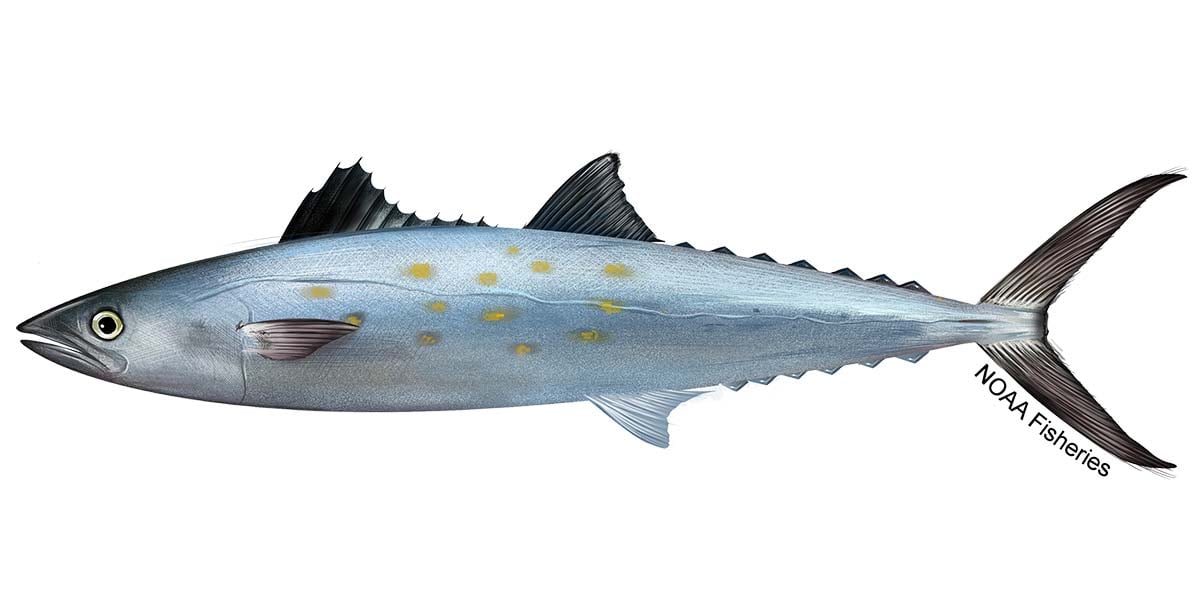
|
At first glance, both mackerel species are very similar in their profile and color pattern, but a few marked differences can determine which mackerel you have caught. Both are long, slender fish complete with a forked tail and similar bronze-colored spots on the body. Spanish mackerel are identified by a succession of dime to penny sized elliptical yellow/bronze spots along their flanks and have a pronounced black spot on the first dorsal fin. Spanish mackerel you’re apt to encounter in New Jersey are generally 10 to 26 inches long and of 1- to 5-pound weights, but an interesting point to note is that the New Jersey state record Spanish mackerel is also the World Record at 9 pounds, 12 ounces!
King mackerel overall have a more silvery sheen to them throughout, with smaller, and more faint “leopard like” yellow spots. Kings lack the number of same spots as the Spanish, plus are missing the light yellow/bluish hue of the Spanish. The king mackerel has a very pronounced dip in the lateral line below the second dorsal fin that is easily seen by simply glancing at the fish. King mackerel in New Jersey – referred to as kingfish in the Southeast – can reach upwards of 40 plus inches and 15 or 20 pounds but can grow considerably to 40 or even 50 pounds. The New Jersey state record king topped out at 54 pounds.
As warm water trends continue to settle in and pattern through New Jersey, Delaware coastal summers, it becomes the time to set out and check the two species off your list, because you never know when conditions may change and they become scarce once again. Spanish are far easier the species to find and target as they have been running fairly thick the past 6 years or so, while kings are really just starting to show up in greater numbers in the past two years north of Cape May.
Either of the mackerel species are tasty in the frying pan as fish tacos, so be sure to fillet and ice them quickly to maintain the texture and taste of the meat. You’ve got the game plan, now go out and get your mackerel fix.
